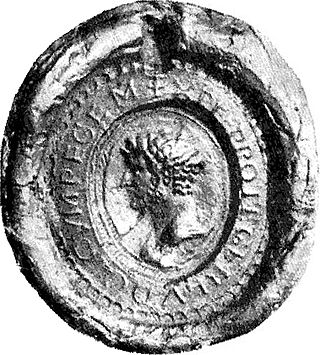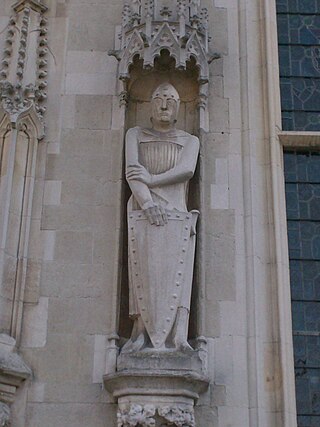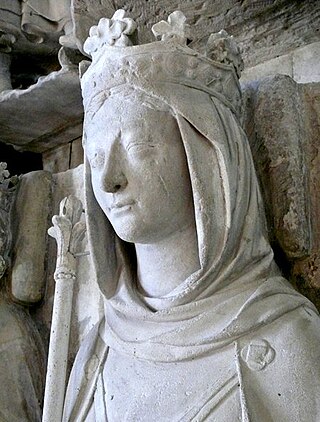
Louis the German, also known as Louis II of Germany, was the first king of East Francia, and ruled from 843 to 876 AD. Grandson of emperor Charlemagne and the third son of Louis the Pious, emperor of Francia, and his first wife, Ermengarde of Hesbaye, he received the appellation Germanicus shortly after his death, when East Francia became known as the kingdom of Germany.

Charles the Bald, also known as Charles II, was a 9th-century king of West Francia (843–877), King of Italy (875–877) and emperor of the Carolingian Empire (875–877). After a series of civil wars during the reign of his father, Louis the Pious, Charles succeeded, by the Treaty of Verdun (843), in acquiring the western third of the empire. He was a grandson of Charlemagne and the youngest son of Louis the Pious by his second wife, Judith.

Lothair I was a 9th-century Carolingian emperor and king of Italy (818–855) and Middle Francia (843–855).

Louis II, sometimes called the Younger, was the king of Italy and emperor of the Carolingian Empire from 844, co-ruling with his father Lothair I until 855, after which he ruled alone.

Robert the Strong was the father of two kings of West Francia: Odo and Robert I of France. His family is named after him and called the Robertians. In 853, he was named missus dominicus by Charles the Bald, King of West Francia. Robert the Strong was the great-grandfather of Hugh Capet and thus the ancestor of all the Capetians.

Baldwin I, also known as Baldwin Iron Arm, was the first margrave of Flanders, which evolved into the County of Flanders.

Ermentrude of Orléans was the Queen of the Franks by her marriage to Charles II. She was the daughter of Odo, count of Orleans and Engeltrude de Fézensac.

Ermengardeof Hesbaye, probably a member of the Robertian dynasty, was Carolingian empress from 813 and Queen of the Franks from 814 until her death as the wife of the Carolingian emperor Louis the Pious.

Charles was the duke of Lower Lorraine from 977 until his death.

Boso was a Frankish nobleman of the Bosonid family who was related to the Carolingian dynasty and who rose to become King of Lower Burgundy and Provence.

Liudolf was a Carolingian office bearer and count in the Duchy of Saxony from about 844. The ruling Liudolfing house, also known as the Ottonian dynasty, is named after him; he is its oldest verified member.

Welf I is the first documented ancestor of the Elder House of Welf. He is mentioned as a count (comes) in the Frankish lands of Altdorf in Alamannia. He is the son of Rothard of the Argengau and grandson of Hardrad.

Ebbo or Ebo was the Archbishop of Rheims from 816 until 835 and again from 840 to 841. He was born a German serf on the royal demesne of Charlemagne. He was educated at his court and became the librarian and councillor of Louis the Pious, king of Aquitaine, son of Charlemagne. When Louis became emperor, he appointed Ebbo to the see of Rheims, then vacant after the death of Wulfaire.
The viscount of Narbonne was the secular ruler of Narbonne in the Middle Ages. Narbonne had been the capital of the Visigoth province of Septimania, until the 8th century, after which it became the Carolingian Viscounty of Narbonne. Narbonne was nominally subject to the Carolingian counts of Toulouse but was usually governed autonomously. The city was a major port on the Mediterranean Sea. In the 12th century, Ermengarde of Narbonne presided over one of the cultural centers where the spirit of courtly love was developed. In the 15th century Narbonne passed to the County of Foix and in 1507 to the royal domain of France.
Gunther or Gunthar was Archbishop of Cologne in Germany from 850 until he was excommunicated and deposed in 863.
Sedulius Scotus or Scottus was an Irish monk, teacher, Latin grammarian, and scriptural commentator who lived in the 9th century. During the reign of the Emperor Lothair (840–855), he was one of a colony of Irish teachers at Liège. Sedulius is sometimes called Sedulius the Younger, to distinguish him from Coelius Sedulius. The usual Irish form of the name is Siadhal, but he appears to have been called Suadbar. It is quite probable that towards the end of his days he went to Milan, following the example of his countryman Dungal, who established a school at Pavia. When and where he died is unknown.
The Robertians are the proposed Frankish family which was ancestral to the Capetian dynasty, and thus to the royal families of France and of many other countries. The Capetians appear first in the records as powerful nobles serving under the Carolingian dynasty of Charlemagne in West Francia, which later became France. As their power increased, they came into conflict with the older royal family and attained the crown several times before the eventual start of the continuous rule of the descendants of Hugh Capet.
Hucbert was a Frank and son of the count Boso the Elder. Therefore, he was a Bosonid, and the namesake for the Huberterian branch of the family. His rise to power commenced under Lothair I but continued under Lothair II, reaching its apex when his sister Theutberga married Lothair II, a prince of the Carolingian dynasty, the imperial family of Francia. Hucbert also served as the lay-abbot of the Abbey of Saint Maurice-in-Valais. This gave him control over the Mons Iovis pass, the main route between Francia and Italy. Hucbert later gained power in the region of Transjurane Burgundy (859) which is what helped him later to find safety within the kingdom of Charles the Bald.
Waldrada was the mistress, and later the wife, of Lothair II of Lotharingia.













